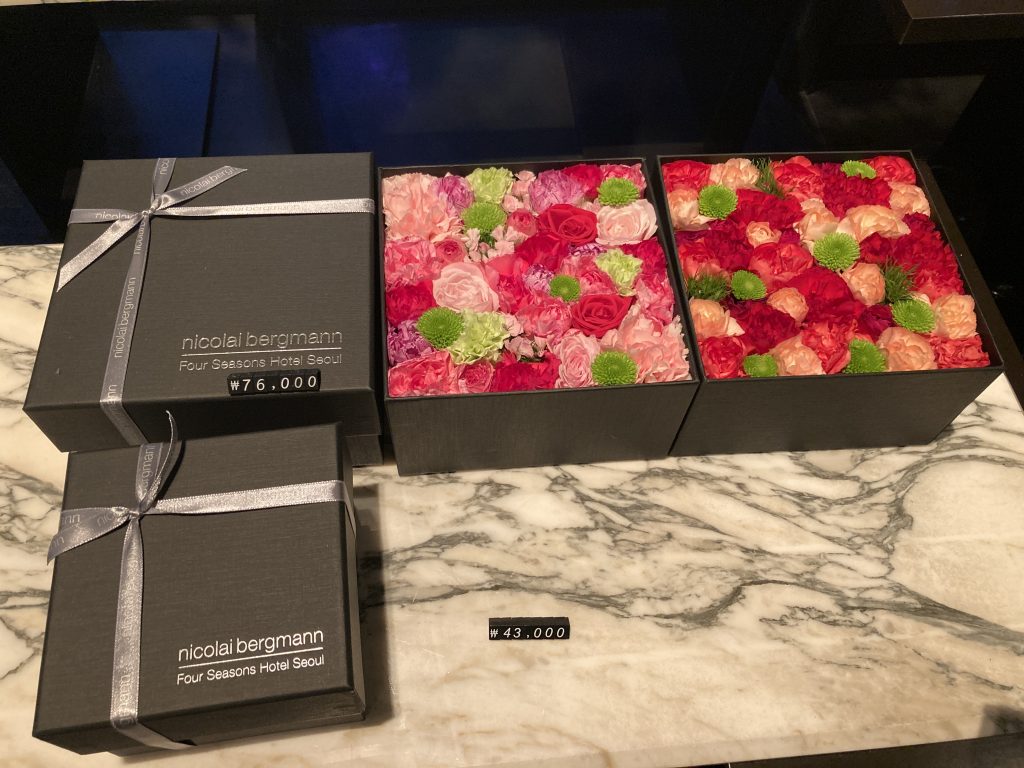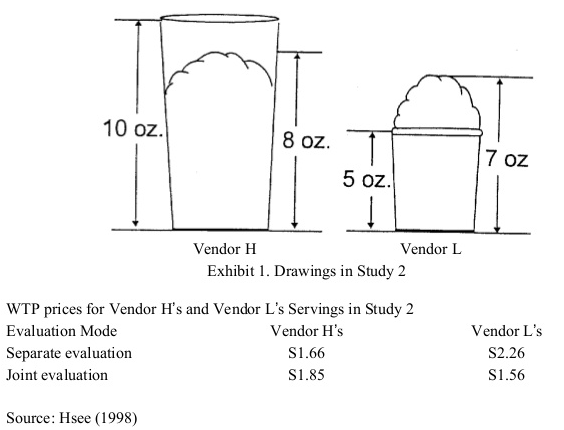
At Nicolai Bergmann, a flower shop in Seoul, I noticed two preserved flower arrangements.

One was overfilled with blooms, spilling out of its display.

The other was neatly arranged inside a square box.
The overfilled one caught my attention first, but after looking at both, I chose the boxed arrangement. Why? When comparing them side by side, I started thinking about something that was harder to judge—the actual amount of flowers. The boxed one felt more balanced, structured, and perhaps even more valuable. I imagine many other visitors would come to the same conclusion
This reminds me of a study by Chris Hsee. In his experiment, people preferred the look of an overfilled ice cream cup with 7 ounces of ice cream over an underfilled one with 8 ounces. But when asked how much they would pay, they were willing to spend more on the underfilled cup ($1.85 vs. $1.56). Why? When evaluating the ice cream separately, they focused on an easy-to-judge factor—whether it looked full or not. But when comparing them together, they paid attention to the harder-to-judge factor—the actual amount of ice cream.
When making choices, we might be drawn to what looks impressive at first glance. But when we take a moment to compare, we start to value things differently.
***
Reference
Hsee, C. K. (1998). Less is better: When low‐value options are valued more highly than high‐value options. Journal of Behavioral Decision Making, 11(2), 107-121.
This research demonstrates a less-is-better effect in three contexts: (1) a person giving a $45 scarf as a gift was perceived to be more generous than one giving a $55 coat; (2) an overfilled ice cream serving with 7 oz of ice cream was valued more than an underfilled serving with 8 oz of ice cream; (3) a dinnerware set with 24 intact pieces was judged more favourably than one with 31 intact pieces (including the same 24) plus a few broken ones. This less-is-better effect occurred only when the options were evaluated separately, and reversed itself when the options were juxtaposed. These results are explained in terms of the evaluability hypothesis, which states that separate evaluations of objects are often infuenced by attributes which are easy to evaluate rather than by those which are important.

